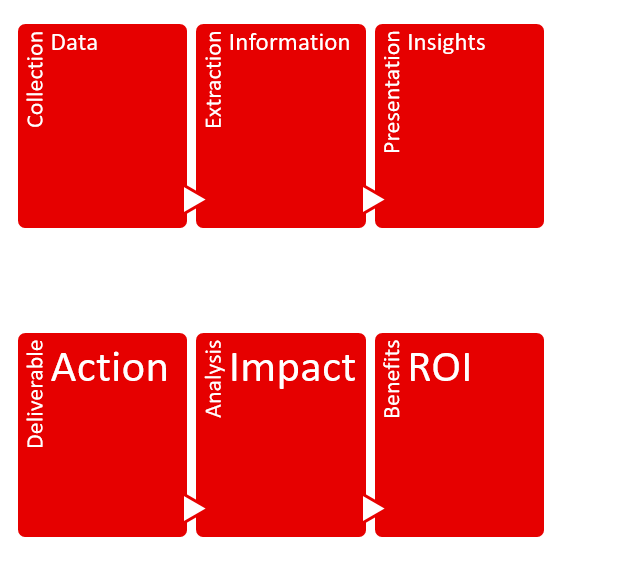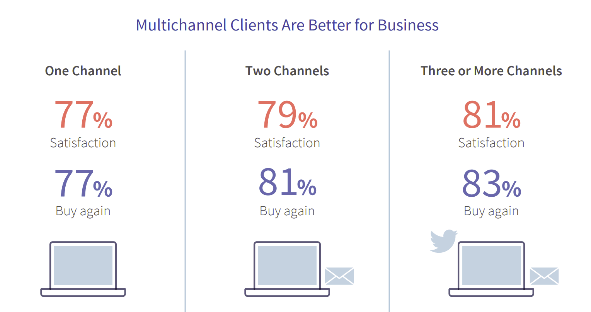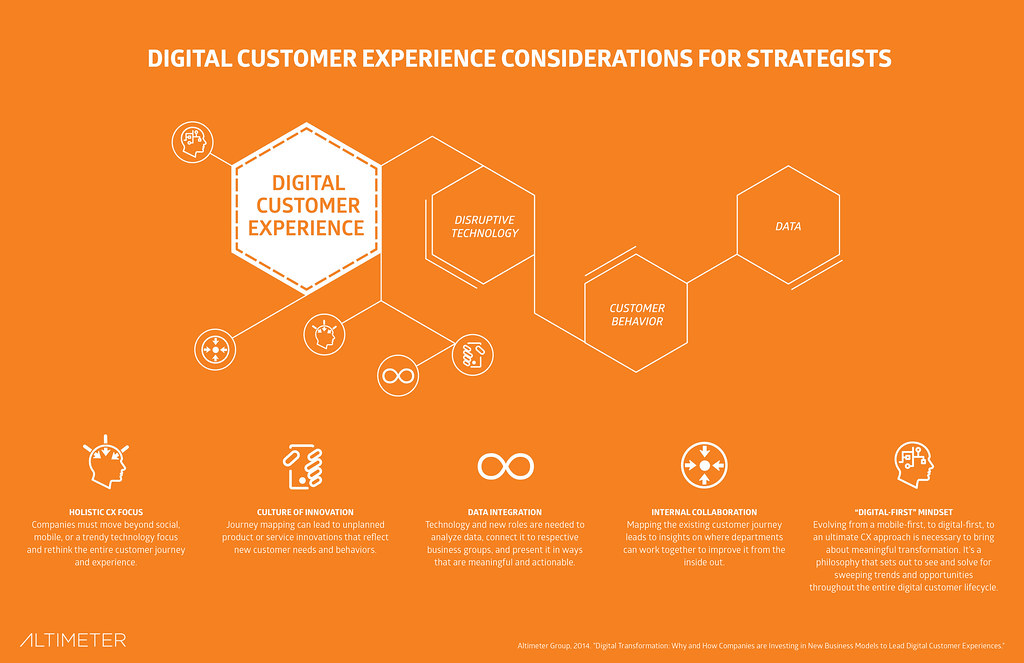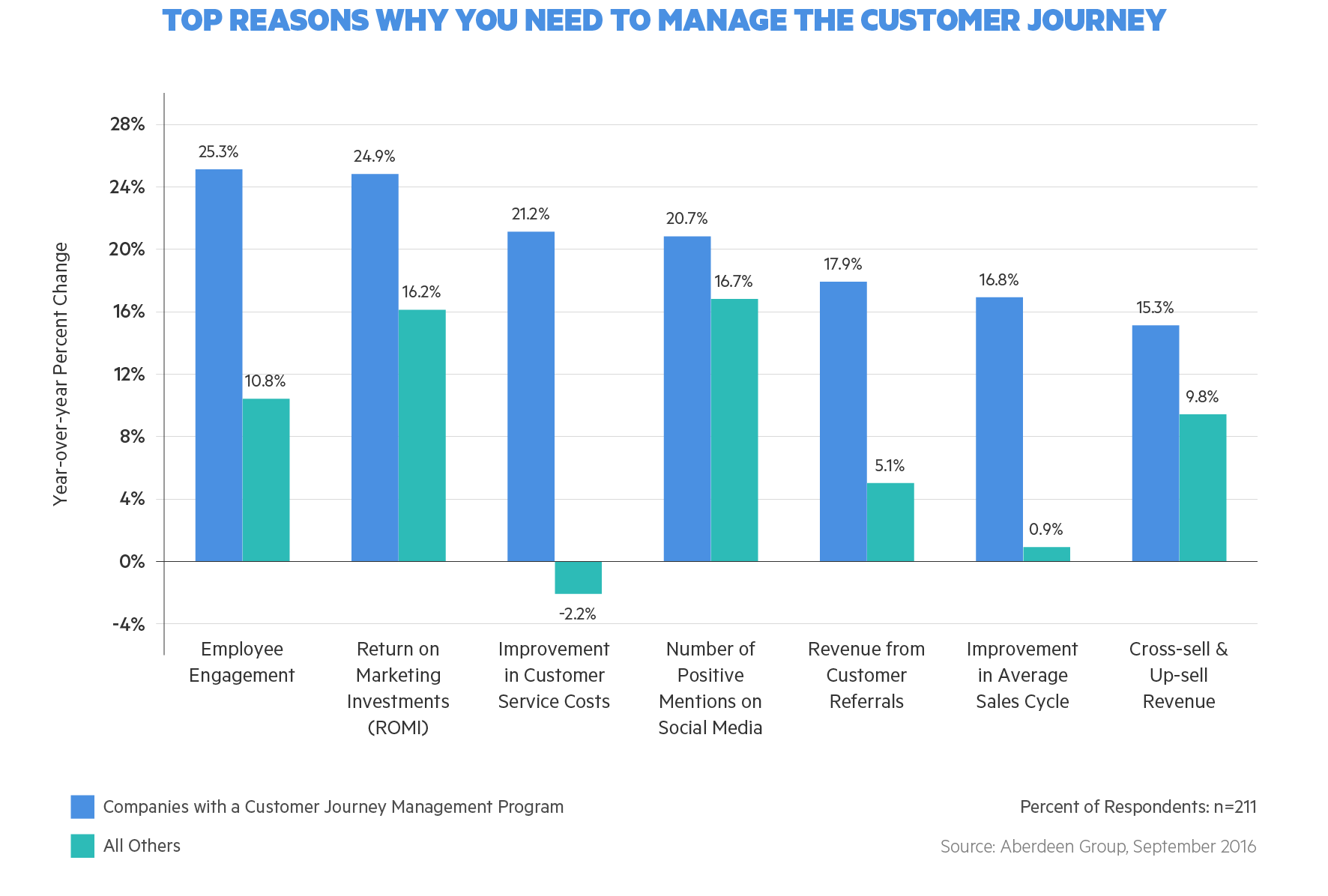Digital Customer Experience Strategy : Actions to Impact or just
hyperbole
Originally Published May 21, 2018
Introduction : The Data connection
According to an article in Forrester magazine, November 2016, ‘74% of companies say they want to be data driven, but only less than 29% are actually successful at connecting analytics to action.’
Digital Customer Experience has been the industry buzzword for some time. Companies, big or small, have made a beeline to invest heavily in data gathering, collection, sorting and analysis. The result : most of these firms are able to gather decent insights in to customer behavior to allow company leaders to make informed decisions about further investments in downstream systems and applications which aid in enriched customer journeys. The enrichment of customer journeys would then translate in to customer loyalty, increased top and bottom lines and goodwill in marketplace. However while so much has been put into deriving the insights based on data collection, far less resources and efforts is devoted to the actions taken by business leaders which have an impact on the business as a whole.

Digital Customer Experience: Predictability and Sustainability
The Digital Customer Experience or DCX as mostly all people know it, can be argued to have become the Holy Grail of any successful enterprise in Digital domain. Be it a service oriented organization or a product leader, effectiveness of DCX has become the basis for market leading customer acquisition, customer loyalty and retention, increase in revenues and profitability, goodwill and ultimately, survival and growth. Massive investments have taken place to attach the tag of Digital experience, be it in automation of existing processes or innovation through new processes, products or tools. Salesforce automation, customer experience management through Omni-channel, seamlessly integrated platforms, customer relationship management, readiness and swiftness of response to customer queries, have seen consistent investment and innovation breakthroughs. Adaption of Digital capabilities is undoubtedly seen as the true path to remain firmly grounded in IT ecosystem, yet flying high powered by flight of innovation. Internalizing Digital capabilities, and development of new Digital agenda, remains key focus area for most managements. One can only assume that the heavy investments and unlimited focus in internalizing Digital capabilities and building new Digital Technologies would have led to an appreciable, sustainable and predictable difference in Customer experience across the marketspace. As any industry expert would quickly note, that is more a fallacy than absolute truth. For years, and across industries, gains in customer experience have fallen consistently short of resources invested in Digital Customer Experience strategy, both in terms of absolute investment and market expectations. A closer introspection reveals the real culprit, if one may use the term to describe the reasons behind the delta of opportunity that seems to have been missed to build a truly, 360 degree enriching experience.
Gartner reports that 81% of executives believe they’ll compete on customer experience alone in the not-too-distant future, but only 22% have claimed to have developed an experience that exceeds customer expectations.
While the Digital strategy has been noble in its goals and providing the big picture for its customers and employees, it has often fallen short in meaningful implementation and even spread of scarce resources to focus on the end to end customer journey. One can question the strategy behind spread of such investments and focus, as when it comes to use of limited resources, inevitably certain focus areas have been winning more than others. In a subtle yet unmistakable manner, the areas which are not central to directly addressing the customer experience, or processes which are not engaged in customer acquisition, tend to fall behind on the spectrum of investments and innovation. Ironically though, customer experience is oftentimes dependent directly on these areas which get left behind.

Digital Customer Experience : Where does it go wrong?
As at the time of implementation of any new strategy, an enterprise has multiple pitfalls it must work to avoid when implementing Digital Customer Experience strategy or making improvements to an already existing one.
Perspective
First, let’s think of your business from the customer point of view – chances are the customers will not see your organization as a combination of departments each providing a distinct value addition, but as a single entity. Customers only see your products or services offering and look to get a particular job done or need fulfilled – anyone from outside the business is unlikely to care how the business is organized. Implementing a digital experience strategy for just one department, say the contact center may fail to cover other parts of your business that are also customer facing – such as back end processes or stores/branches and the customers they serve, for example. The result – broken and inconsistent customer experience and unmet expectations for customers as well as internal stakeholders. End product – failed digital strategy.
Prioritize
Second, The Digital strategy chosen by the Organization needs to be transparent and fitted closely to match customers’ needs. A Digital Customer Experience strategy formulated just to add buzzwords to the company website or just because ‘everyone else is doing it’ or simply a half-hearted attempt at implementing a strategy for the sake of it, even the most advanced IT solution will fail to properly implement an effective and fresh Digital program.
Controls and Balances
Thirdly, equally as important as the customers’ needs, the needs of the organization itself and the product or services it provides must be closely matched with the Digital strategy. Many companies clumsily, almost hastily add digital components to customer journeys or go down the path of reinventing the customer journeys themselves, ignoring the fact that such measures don’t directly benefit the customer or are superfluous to the company’s value proposition. At best, these additions fail to gain traction; at worst, they may make the experience more complicated or confusing and drive customers and valuable employees away. In most organizations, any shift toward greater customer-centricity requires some degree of organizational change. For some, the change is modest while for some it may be transformational. For most others, it’s just really hard all the way.
Safeguard and Reassure
Fourth, there are bound to be some customers who find the current product and services fit for their requirements and may not be keen to see changes. They may fear that these changes, though with noble intent, may break something and may cause a disruption in their experience. These customers are ambassadors for the enterprise and its product / services. These customers and their like need to be brought on board and at an early stage during the launch of Digital Customer Experience strategy. This is recommended for dual intent of soothing the customers’ nerves while also using existing goodwill to spread word of mouth publicity.
Find Promoters
Finally, the Digital Customer Experience strategy needs to be socialized across the organization. Organization executives may tend to underestimate or overestimate the complexity of their existing digital channels. It’s very easy for organizations to plan and develop their digital channels so that they are more complex than traditional touch-points, or introduce more complexity in the system in the name of going Digital, whether they need to be or not. This is done for varied reasons, sometimes just to follow what others are doing or sometimes simply because the traditional functionality is viewed as too ‘Vanila’. Prospects and customers can perform many tasks and services themselves through one website portal – searching for product information, managing their online account, using self-service tools, asking questions online through IM and obviously buying new products. Does the enterprise need it? Or does it need an integration with bots more than a complete Digital strategy? This is a very different proposition to a more traditional contact center experience which will typically be done for a specific purpose or issue, such as a specific service related question for example.

Image Credit: Altimeter
Digital Customer Experience : Raise the Bar!
As we look ahead, true holistic approach to Digital Customer Experience journeys is needed in light of industry specific context. The numerous variables contributing to and affecting the customer experience and all of the components, the enabling processes and technologies – the front office, middle-office and back office processes and technologies – necessary to deliver the end to end truly Digital Customer Experience, complimented in no small measure by those Governance, leadership, Cultural and organizational behavioral factors which drive improvements to execute, reinforce and monitor the ‘future’ states and outcomes.
As an important consideration, the last mile customer touchpoints, which form crucial part of overall customer experience and where lasting impressions are made, need to see more focused and longer term strategies to gain prominence. This area assumes importance because this is where most human elements often remain and customer satisfaction is accrued and validated. While remaining close to the heart of customer experience, this area has received lesser attention or strategy share.

Digital customer experience strategies cannot be successful in the long term if an equal underlying investment and management focus is not made in the business technologies and processes on the fulfillment side. 360° investment focus is needed to provide 360° Digital Customer Experience. The investment and strategy focus needs to be directed to not just the enabling technologies, rather towards the whole of the customer experience, encompassing 360-degree view, and zooming in on end to end value chain. Or as we illustrated earlier, the focus must be on all the departments in the value chain, including the value addition by vendors and third party providers.
Equally importantly, the people running the show in all departments, and key people in key departments, need to be brought onboard. Technology is a great tool, but on its own it is just a facilitator and not a wonder pill for all of the enterprise’s needs and goals. Without the team backing up the key endeavors and supporting the overall strategy, chances are that the strategy will remain as valuable as the paper on which it was written.
Unless this paradigm shift in strategy through a change in perspective of strategy makers takes place, investments to deliver a predictable and sustainable Digital Customer Experience will continue to provide results which fall consistently short of market expectations and Return on Investments.